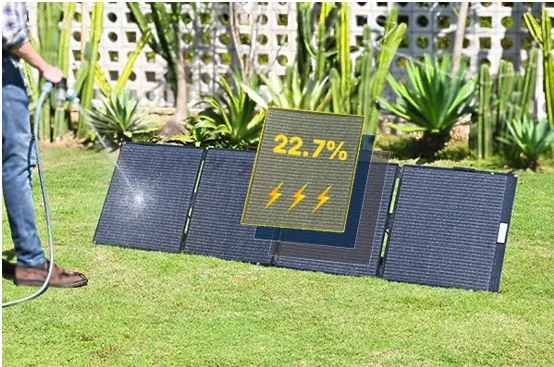What Electrical Dangers Are Hiding in Your Older Home Renovation?
Something about old houses is undoubtedly delightful. The craftsmanship, the character, the small details that cannot be adequately replicated in modern construction. However, behind the antique look, your older house may be concealing some form of severe electrical risks that might endanger your family.
These are some of the concealed hazards that you need to know about, not only because it is smart to do so, but also because it is necessary. We shall see what could be hiding in your electrical system at home.
The Truth of Old Fashioned Wiring.
Here is the point about electric systems, they were not designed to support our current lifestyle. The pre-1980s houses were not designed with the idea that there would be a computer, a smart television set, a gaming system, and an air fryer and a myriad of other plug-and-play devices that we use today. The electric system installed by your grandparents did not support a digital ecosystem as you know it: a few lamps and perhaps a radio.
Old wiring is not only an inconvenience, but a hazard too. Ancient wiring insulation may get brittle and crack allowing live wires to be exposed. Connections may become loose with time and this results in resistance making heat. And that heat? It’s a fire waiting to happen.
Knob and Tube Wiring: A Lovely Relic Which Must Go.
Nob and tube wiring may be in place in your home as long as it was constructed between 1880 and 1940s. In this system, ceramic knobs were used to retain the wires and ceramic tubes to shield them where they are crossing the structural members. It was the time of its innovation, yet it is totally insufficient today.
The issues with knob and tube are too many. It does not have a ground wire which is very important in modern day safety. The insulation disintegrates with age and the system is just not able to sustain the electricity load of modern lifestyle. Several insurance agencies will refuse to provide coverage to homes with active knob and tube wiring and with good reasons.
In case you find this old wiring in the process of home renovations, don’t even think of retaining it. A total rewire is not cheap, but a total necessity in regard to safety.
Aluminum Wiring: The Deadly Vice.
The builders started using aluminum wiring as a cheaper alternative to copper in the 1960s and 70s when the cost of copper wiring was high. Apparently such a good idea then. Turns out, not so much.
Aluminum wiring stretches and contracts faster than copper does when heated and cooled down. This movement may result in breaking of ties over time. Loose connections cause resistance, resistance causes heat and heat causes fire risks. Aluminum also oxidises in the air which further adds more resistance at the points of connection.
In case of aluminum wiring in your home, then you will want to get the advice of a professional like electrician innerwest to determine your case. In some instances, special connectors can render aluminum wiring safe, however, in most instances, replacement is preferable.
Two-Prong Outlets: Not The Right Way to be Inconvenienced.
Stroll around your older house and see how many two prong outlets there are. All of them are possible safety concerns. Two prong outlets say that there is no grounded electrical system and as a result, there is no safe route for excess electricity to follow in case of a fault.
Three-prong outlets fitted in the present day have a ground wire channeling any electric current that may leak off-target into the ground instead of passing through you or your appliances. This grounding is particularly necessary when dealing with the devices whose casings are made of metal such as a refrigerator, washing machine and power tools.
The problem is not solved by merely replacing two prong outlets with three prong outlets when there is no ground wire in the wall. Proper grounding needs to be rewired or GFCI outlets need to be installed as an alternative that is safer.
Obsolete Electrical Panels and Fuse Boxes.
The electrical panel of your home is the key to your electrical system. When you have an old fuse box rather than a modern circuit breaker panel, you are handling an obsolete technology that would not be sufficient to offer you enough protection.
Better still, some of these panel brands such as Federal Pacific Electric (FPE) and Zinsco panels have documented failure records. These panels do not cut off when they are supposed to and this means that circuits can go overheated and cause a fire. In the event that you have one of such panels, it should be the first item in your renovation agenda list.
The average family now requires 200-amp of service to power all of our devices and appliances. Most houses that are older are 60 or 100-amp, which is simply not sufficient. Not only is it important to upgrade your panel to add capacity, but also important safety features, such as GFCI and AFCI protection.
Junction Boxes and Modifications Hidden and Improper.
Over the decades, houses tend to be modified several times by different owners and handymen. These changes are sometimes code driven, and sometimes… I guess we have to say that creativity is safer than safety.
Covered over junction boxes, wire spliced together, with no connectors, circuits stretched past their authorized capacity, the DIY calamities might be lurking behind your walls as long as you can afford to have them there. Hence it is advised to work with custom home builders for renovation work since they can always find out these hidden horrors and fix them as one of the initial tasks.
This is also why electrical check-up is important before commencing any renovation. What you are not able to see can hurt you.
The lack of GFCI Protection.
Ground Fault Circuit Interrupter (GFCI) outlets are outlets which have the little test and reset buttons usually located in bathrooms and kitchens. They have a design to cut electrical power within milliseconds if an imbalance in the electrical current is detected like what would occur in case of the flow of electricity through water or through you.
GFCI protection is not added to older houses in places where water and power may be in contact: bath rooms, kitchens, laundry rooms, garages, and exterior outlets. These areas are now being covered by building codes with GFCI protection and the retrofitting of your home by the installation of these safety devices is a rather cheap upgrade that has the potential to save your life.
Overloaded Circuits: The Invisible Menace.
You may not notice it, however, when your lights dim the moment you turn on the microwave, when you are constantly having to reset tripped breakers, your circuits are screaming. The older houses were not built with sufficient circuits to suit the modern lifestyle and thus the homeowners end up overloading the available ones.
Excessive current through a circuit will result in wires heating. In the long-term, this heat deteriorates insulation and may cause a fire around it. It is a low burning issue–until all of a sudden it isn’t.
Overloading can be prevented by adding special circuits to high drawing appliances during renovation and redistributing the electrical load can lead to a high level of safety.
Safety First, Character Second.
The beauty of your old house does not necessarily mean at the expense of your security. Knowledge of the electrical hazards that are often lurking in older houses will enable you to make a wise choice when renovating.
Do not forget that electrical work is not a DIY job unless you are a licensed electrician. This is one area where professional knowledge is vital and this is due to the fact that they are dealing with electrical systems that are very complex and the possibility of making mistakes in installing or fixing them is very high.





